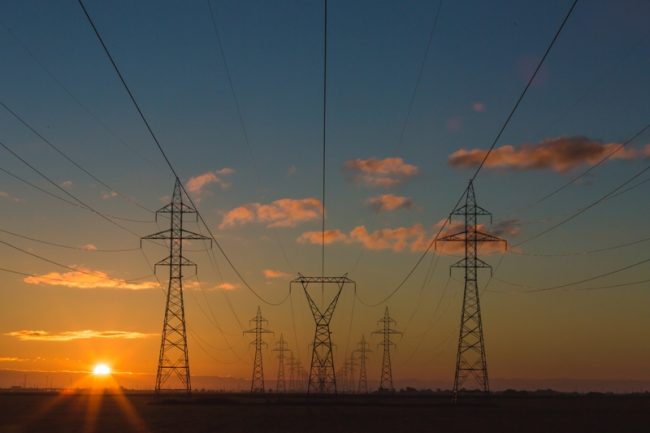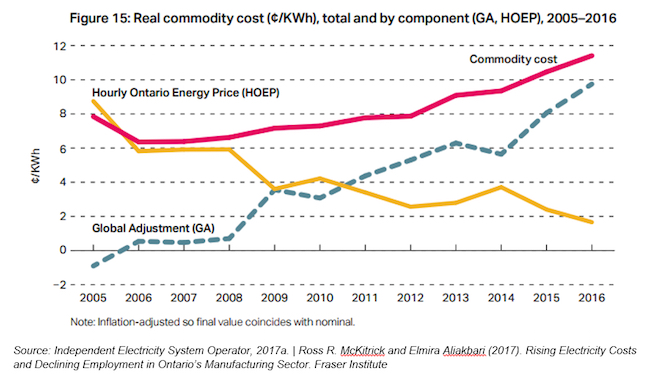
Ontario Electricity Costs are Skyrocketing. Energy Storage Can Help
by Colin Neagle


Large businesses in Ontario have experienced a drastic increase in electricity costs in the past decade. In Toronto and Ottawa, for example, electricity costs grew 53% and 46% from 2010 to 2016, compared to an average increase of 14% in other Canadian cities over that period, according to a report released in October by the Fraser Institute. Last year, large industrial organizations in the province paid nearly three times as much for electricity as their counterparts in Montreal and Calgary, the report added.
However, this increase in total electricity costs has coincided with a steady decline in hourly energy prices in Ontario. The Fraser Institute’s report shows that while the total commodity cost for electricity has grown from about 8¢/KWh in 2005 to nearly 12¢/KWh in 2016, the hourly Ontario energy price has declined from roughly 9¢/KWh to less than 2¢/KWh.
What’s Behind Rising Electricity Costs in Ontario?
The primary driver of increased electricity costs in Ontario has been the Global Adjustment (GA) charge, which is passed onto Ontario customers’ hydro bills. Energy providers impose GA costs to cover their costs of providing adequate generating capacity and conservation programs throughout Ontario. Generally, when the wholesale market price for energy is low, GA is higher to cover generation costs. The GA rate is also impacted when new conservation projects are launched, when contract payments take effect, and when electricity demand shifts in Ontario.
As you can see in the chart below, GA costs spiked in 2009, and continue to drive up overall commodity costs for customers.

How Ontario Businesses Can Reduce Electricity Costs
Thanks to a recent policy change, large businesses in Ontario can start to gain control of the GA charges that drive up their annual electricity costs.
Since 2010, Ontario businesses that qualified for the Industrial Conservation Initiative (ICI) were assessed an annual GA rate based on their contribution to peak demand on the grid. The GA charge for each building was calculated based on that building’s demand at the top five peak demand hours for the Ontario grid every year. This created the opportunity for these buildings to reduce their annual GA charges—if you can predict when peak demand is most likely to occur and temporarily reduce your demand for that period, you can reduce your GA charge.
In 2017, Ontario expanded eligibility for the ICI. Whereas the program was previously limited to buildings with an average peak demand of 5 MW or greater, the program is now open to all buildings with a peak demand of 1 MW or greater, as well as those in select industries with a peak demand of 500 kW or greater.
However, while expanding ICI eligibility opened this opportunity to far more Ontario businesses, it did not address the two main challenges to fully capitalizing on the opportunity to manage GA costs: accurately predicting when peak demand will occur on the grid, and reducing demand in a significant way without disrupting operations in your buildings.
This is where an intelligent energy storage solution can play an important role. When combined with insight into trends on the Ontario grid, businesses can seamlessly transition a portion of their building’s load onto an energy storage system at the times when system peak is most likely to occur throughout the year. By reducing their contribution to peak demand on the grid, they can reduce their GA rate significantly. Businesses that reduce their peak demand factor by 1 MW stand to save more than $500K in GA charges in the following year.
On Tuesday, February 27th, CanadianManufacturing.com will host a free 30-minute webinar that will break down:
- What goes into the process of predicting the peak demand periods that determine GA costs for ICI customers
- How an intelligent energy storage solution can enable Ontario businesses to reduce grid demand without disrupting operations at the site level
- Why some businesses can integrate an energy storage solution to reduce GA charges with no upfront capital investment required
Register for this webinar and learn how Ontario businesses can reduce electricity costs with energy storage
This article originally appeared on EnerNOC’s EnergySMART blog.
Colin Neagle is a marketing manager for EnerNOC and editor-in-chief of the EnergySMART blog.